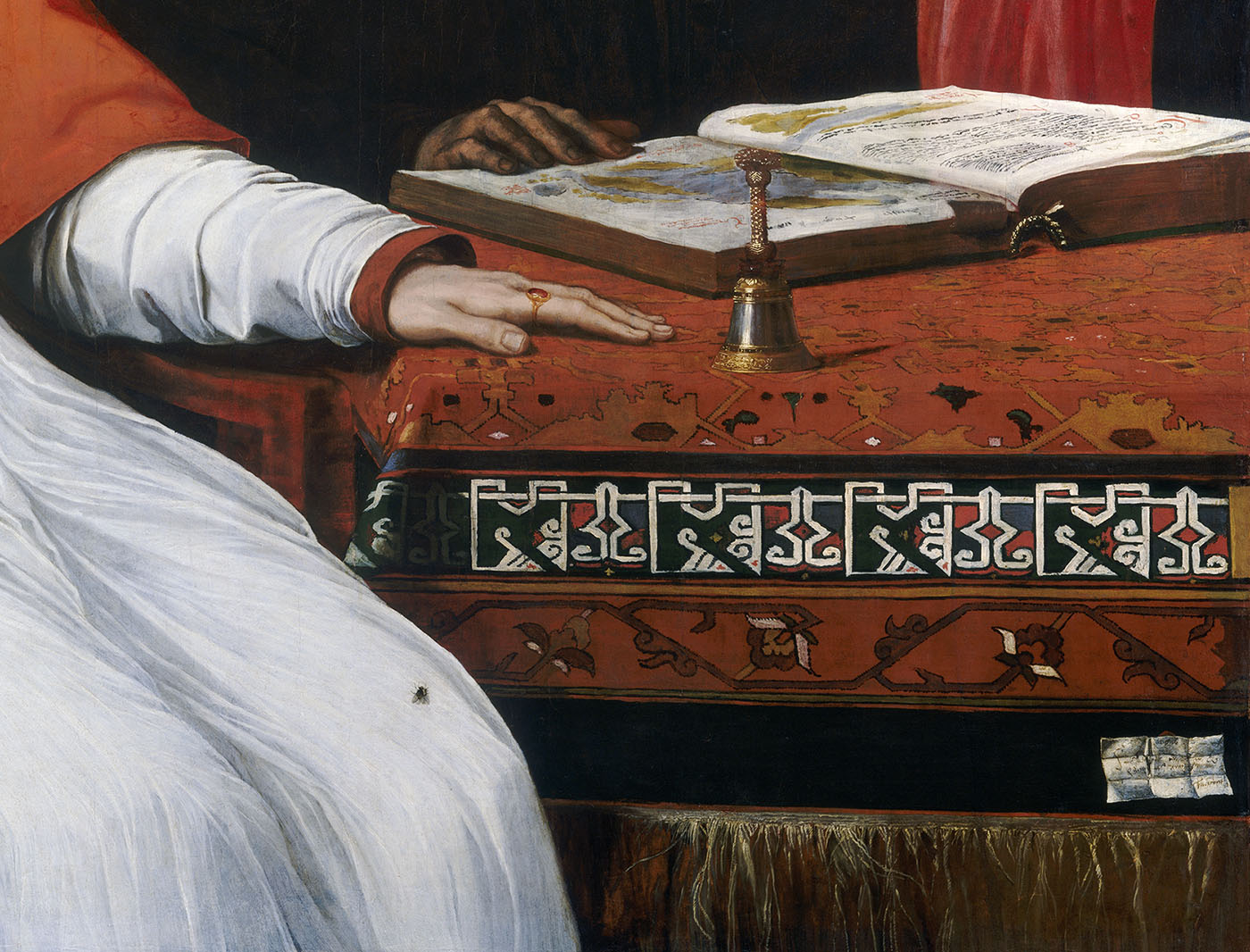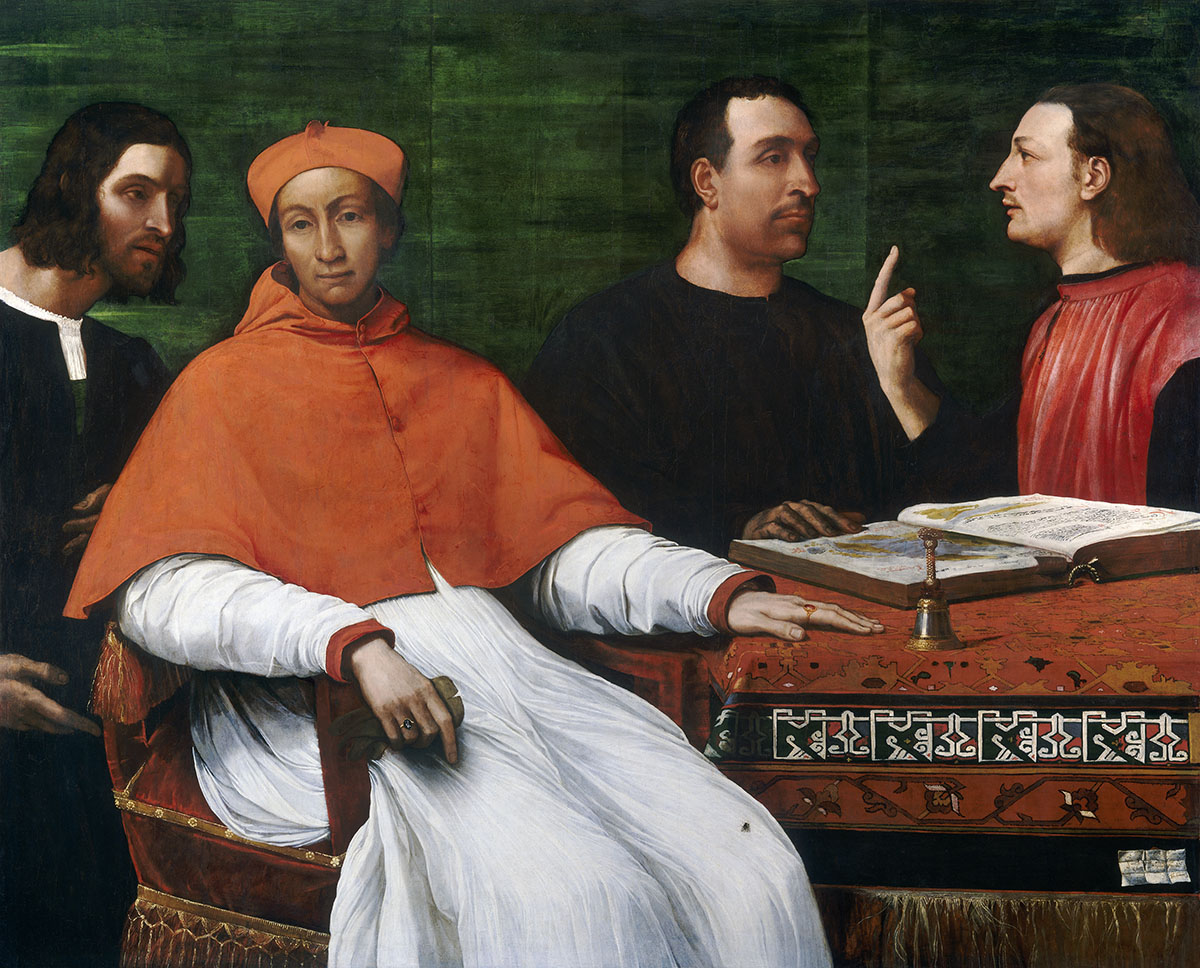
Historical
Oriental Rugs & Carpets
in Medieval European Paintings
Main Page
|
|
Cardinal
Bandinello Sauli, His Secretary, and Two Geographers. 1516
oil on panel transferred to canvas, 121.8 x 150.4 cm
National Gallery of Art, Washington
Samuel H. Kress Collection
by Sebastiano Del Piombo (b.
1485, Venezia, d. 1547, Roma)


The table in Cardinal Bandinello
Sauli's portrait is a display of personal symbols. His name on the Sanctus bell
rung at Mass emphasizes his vocation and the open geographical text his
intellectual interests. The "Lotto" carpet symbolizes his wealth, elite social
status, and refined artistic taste. Its twisted fringes indicate minimal wear.
Italians usually kept their best carpets in chests, displaying them on special
occasions.
This is the earliest known depiction of this particular Turkish carpet
pattern. In the nineteenth century, carpet patterns were named after various
European artists who had painted them with meticulous detail. Venetian Lorenzo
Lotto depicted the field pattern on Sauli's carpet twice, once framed by similar
borders. Other carpet patterns were named after Hans Holbein and Hans Memling.